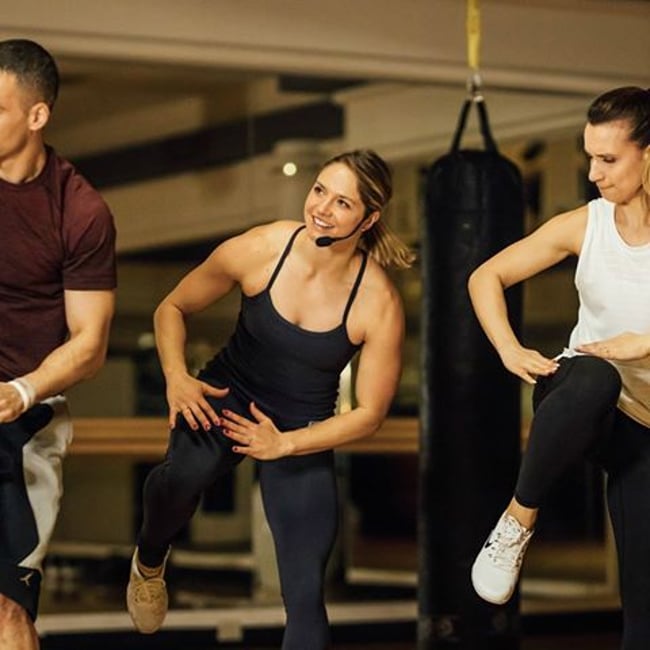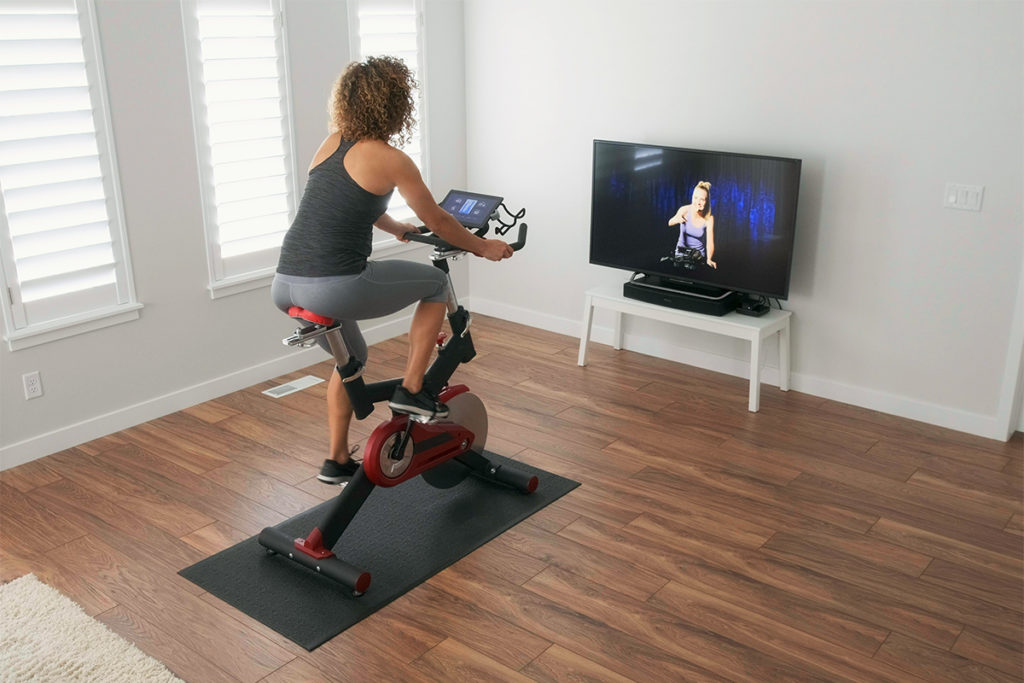Fitness Hybridization: Strategy vs. Schedule, Part One
How do you determine your approach to digital and in-person group fitness offerings?

How’s your fitness hybridization going? If you don’t know what I’m talking about, I’m referring to how two different components combine to perform a single function or become something new. Lately, hybrid has become an industry buzzword describing programs that include both virtual and in-person offerings. The word loses its meaning, however, when we see these two aspects as separate. It’s therefore a good idea to approach your group fitness class schedule as more than just a menu of options available in specific time slots—taking a broader view will add strategy, which will benefit your participants.
The key is to package and approach your group fitness offerings as a journey. Members want to easily customize their experience, recognize how your classes directly serve them, and be able to navigate your offerings quickly. These are high expectations, especially considering the additional “layers” of digital and outdoor environments. Take a deep breath, smile and recognize that you have an excellent opportunity to reinvent how you organize, package and deliver your classes.
This article, the first in a four-part series, provides an overview of how time, type and talent have changed since the pandemic began and how these changes could affect the hybridization approach you’ll want to adopt.
Develop a Strategy Mindset
Start by shifting your approach from “selling” a single experience to building an ecosystem. Your offerings should help participants find what they need whenever and wherever it works best for them. Get curiously creative, learn what your members want and be willing to try new things. Review what has worked in the past, ask current participants about the present, and open yourself and your team to exploring and recognizing opportunities to experiment with in the future.
While it may be more comfortable to put classes and instructors in the same formats and times as before, if there’s anything the past year has taught us, it’s that easy is not always better. The old way doesn’t account for the drastic changes in your participants’ lives and expectations. As you decide on the details of your fitness hybridization plan, think about your choices. Ask yourself
- Is this decision based solely on what we’ve done before?
- Is this option based on feedback from our current participants?
- Does this decision contribute to or complement our other offerings?
- Would this choice help a new participant feel successful or become more acquainted with our program?
Asking these questions will ensure that you’re keeping and adding classes that contribute to the ultimate goal of building an interconnected system of digital and in-person offerings that appeal to a majority.
See also: Leading a Team in a Hybrid Fitness World
Implement a Strategic Schedule for Fitness Hybridization
There are so many variables to account for in a successful group fitness schedule. When the pandemic hit, many of us added outdoor and digital offerings. If you’re like others, you quickly threw something together in order to hang on to anything you could. As the industry recovers and companies reevaluate schedules, it’s essential to step back and identify what to keep and what to leave behind or turn into a seasonal offering.
When it comes to making strategic decisions about the schedule, you’ll need to determine class times and durations; formats; and instructors. We can refer to these components as time, type and talent.
Time: Selecting days and times for your classes is about more than just who’s available to teach. You can’t build a schedule around your talent’s schedules because it will become fragmented and inconsistent. The day and time you select for a class must match participants’ needs, which may have dramatically changed since before the pandemic. Another consideration is class length. More participants are finding value in shorter, customizable classes that fit their specific needs; for example, a 30-minute stretching class.
Type: If there’s a way to find out granular information about your demographics (age, gender, occupation), it could offer more insight into complementary formats they’d enjoy. The digital environment has made it easier to get very specific. For instance, you can build classes that advance in proficiency, are unique to a certain instructor, or focus on one pose or body part.
Talent: When choosing which instructor is right for a class, don’t just consider availability, ability and personality. Participants want instructors who can meet them where they are and help them feel successful. Instructors have had to adapt their teaching to new environments and have most likely experienced changes to their schedules and interests. Some have enjoyed the break, while others are eager to teach any day and time. Be intentional when matching instructors with classes, and check in regularly with your team.
Develop an Evaluation Strategy for Fitness Hybridization
A solid fitness hybridization approach will include paying attention to data, so explore all consumer interaction data you have. In many instances, having behavioral data provides better insight than survey questions. For example, if you already have clear data showing that nearly 90% of your videos are viewed for 20–30 minutes, it may be unnecessary to ask questions about class duration. Hosting your digital content on a platform that provides consumer behavior data can give you very useful insights.
Next, consider surveying your participants. Keep surveys short. Build and distribute the questions strategically. Get clear on why each question is valuable, and distinguish who is responding. Be specific. Guide the responder with choices that align with what you can offer. If you’d like to learn more about the equipment participants have at home for virtual workouts, ask about equipment your gym already has. Ask only 3–5 questions, and always provide a place for additional feedback.
Surveys are an essential part of the strategy-building process, and they keep current, past and future participant needs at the forefront of your awareness. Ask for feedback on your schedule and get curious about what people are doing outside of your facility.
See also: Three Steps to Building a “Hybrid” Fitness Business
Schedule Success
The success of a class is about much more than attendance. A 6:30 a.m. yoga class may not get as many participants as a 6:30 p.m. strength class, but the value is equal. Assessing and tweaking your schedule will be an ongoing process, so do your best during this time of rebuilding and reevaluation. Stay positive and open. Develop strategic relationships with other fitness facility owners and entrepreneurs. Some of my favorite moments during the pandemic were spent working with and learning from other leaders.
Strategy shines when you know your participants, get creative, and constantly assess and re-evaluate your programming. In future articles in this series, we’ll get more specific about each strategy as it pertains to in-person services (indoor/outdoor), digital offerings (synchronous “live”/asynchronous “on-demand”), and more.
See also: 5 Lessons From Virtual Fitness Companies
Staci Alden
Staci Alden is committed to helping group fitness managers elevate their programs, instructors, and leadership skills through her writing, presentations, and YouTube channel. For more than a decade, she has overseen a team of over 100 private Pilates and group fitness instructors at a luxury health club in Seattle, Washington. Staci also is certified as a master Balanced Body® barre and MOTR® instructor.





